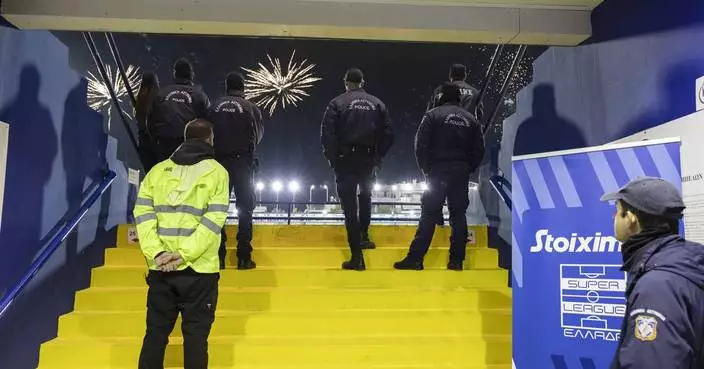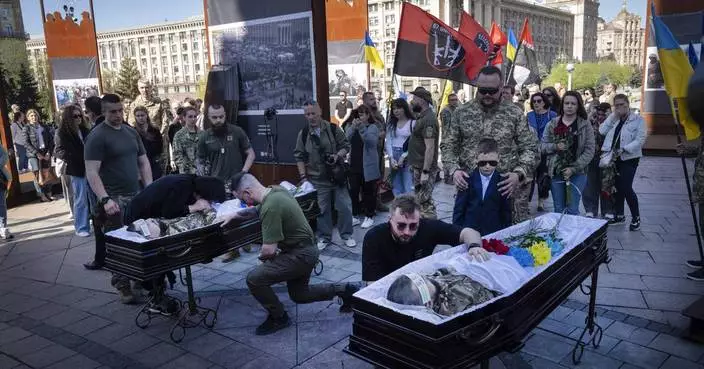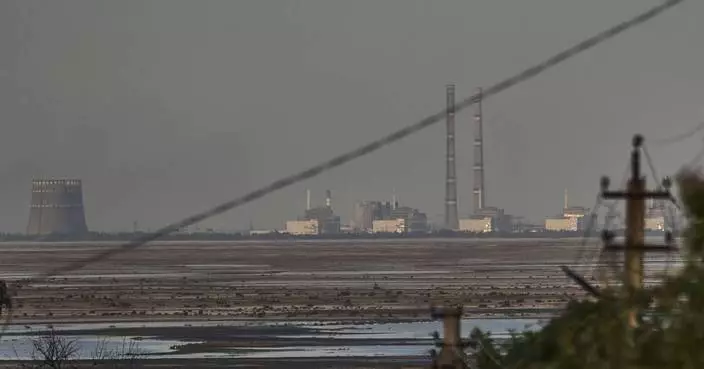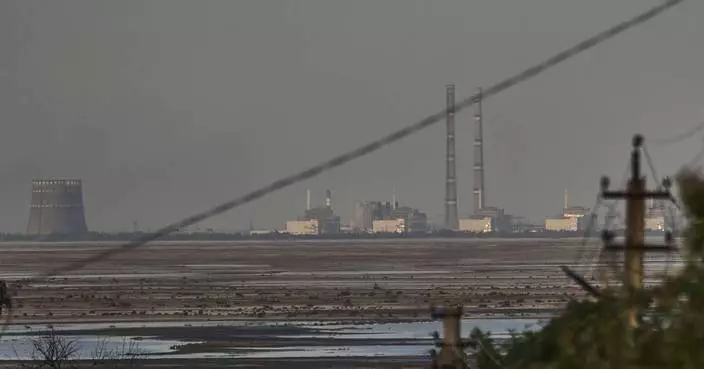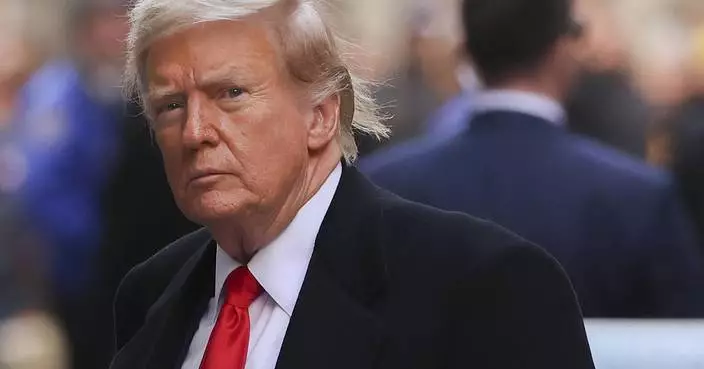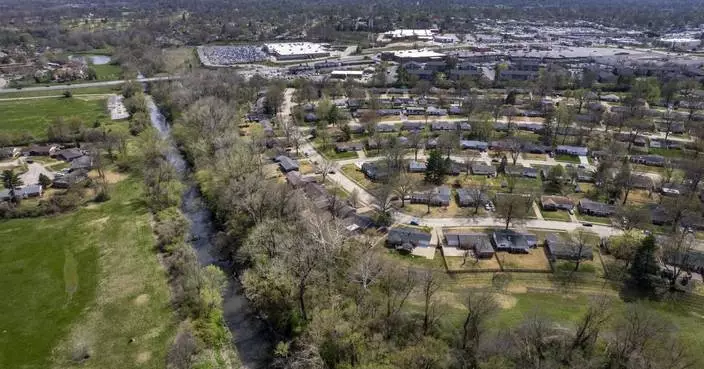South Korean President Moon Jae-in said Thursday that his rival, North Korean leader Kim Jong Un, isn't asking for the withdrawal of U.S. troops from the Korean Peninsula as a precondition for abandoning his nuclear weapons. If true, this would seem to remove a major sticking point to a potential nuclear disarmament deal.
North Korea, a small, authoritarian nation surrounded by bigger and richer neighbors, has always linked its pursuit of nuclear weapons to what it calls a "hostile" U.S. policy that is embodied by the 28,500 U.S. troops stationed in South Korea, the 50,000 stationed in Japan, and the "nuclear umbrella" security guarantee that Washington offers allies Seoul and Tokyo.
Click to Gallery
South Korean President Moon Jae-in said Thursday that his rival, North Korean leader Kim Jong Un, isn't asking for the withdrawal of U.S. troops from the Korean Peninsula as a precondition for abandoning his nuclear weapons. If true, this would seem to remove a major sticking point to a potential nuclear disarmament deal.
A man passes by a TV screen showing file footage of CIA Director Mike Pompeo, center right, and North Korean leader Kim Jong Un, center left, during a news program at the Seoul Railway Station in Seoul, South Korea, Wednesday, April 18, 2018. (AP Photo/Ahn Young-joon)
Although Moon reported that North Korea isn't asking for the U.S. troops to leave, he said the North still wants the United States to end its "hostile" policy and offer security guarantees. When North Korea has previously talked about "hostility" it has been linked to the U.S. troops in South Korea.
A visitor looks at the photos of two Koreas history at exhibition hall of the unification observatory in Paju, South Korea, Wednesday, April 18, 2018.(AP Photo/Lee Jin-man)
Many analysts believe that Kim sees the meeting with Trump as a way to bestow legitimacy on his own leadership and on a rogue nuclear program that he has built in the face of international criticism and crippling sanctions. Many say it is unlikely that the North will trade away its hard-won nuclear weapons without getting what it wants in return.
Visitors use binoculars to see the North Korea side from the unification observatory in Paju, South Korea, Wednesday, April 18, 2018. U.S. President Donald Trump has given his "blessing" for North and South Korea to discuss the end of the Korean War amid a diplomatic push to end the North Korean nuclear standoff. One problem: There can be no real talks without the involvement of the other countries that fought the 1950-53 war, and especially the United States. (AP Photo/Lee Jin-man)
North Korea has long sought a peace treaty with the United States to formally end the 1950-53 Korean War. Some South Koreans fear the North could use such a treaty as a pretext for demanding the withdrawal of the American troops in the South. Some worry that potential discussions on formally ending the war may distract from already difficult efforts to rid the North of nuclear weapons and apply robust verification of that process.

A South Korean army soldier passes by a TV screen showing file footage of CIA Director Mike Pompeo, left, and North Korean leader Kim Jong Un during a news program at the Seoul Railway Station in Seoul, South Korea, Wednesday, April 18, 2018. (AP Photo/Ahn Young-joon)
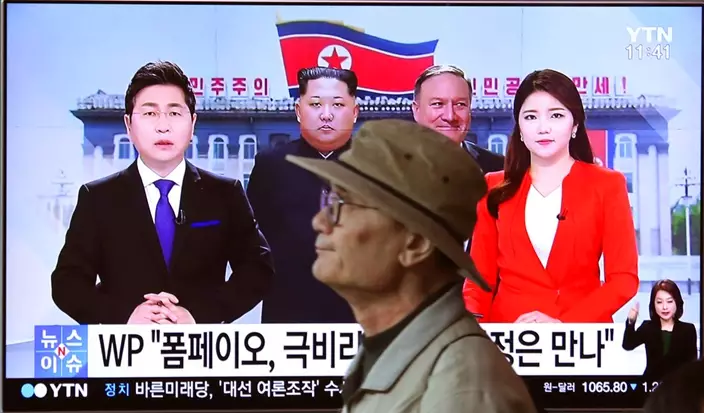
A man passes by a TV screen showing file footage of CIA Director Mike Pompeo, center right, and North Korean leader Kim Jong Un, center left, during a news program at the Seoul Railway Station in Seoul, South Korea, Wednesday, April 18, 2018. (AP Photo/Ahn Young-joon)
Although Moon reported that North Korea isn't asking for the U.S. troops to leave, he said the North still wants the United States to end its "hostile" policy and offer security guarantees. When North Korea has previously talked about "hostility" it has been linked to the U.S. troops in South Korea.
It won't be until Moon and Kim meet next week, and then when Kim is to meet U.S. President Donald Trump sometime in May or June, that outsiders might know just what North Korea intends. Until then, caution is needed over the statements the various leaders are using to set up their high-stakes negotiations.
Moon and Kim's summit on April 27 will be only the third such meeting between the countries' leaders. Moon, a liberal who is committed to engaging the North despite being forced to take a hard line in the face of repeated North Korean weapons tests last year, is eager to make the summit a success and pave the way for Kim and Trump to settle the deep differences they have over the North's decades-long pursuit of nuclear weapons.
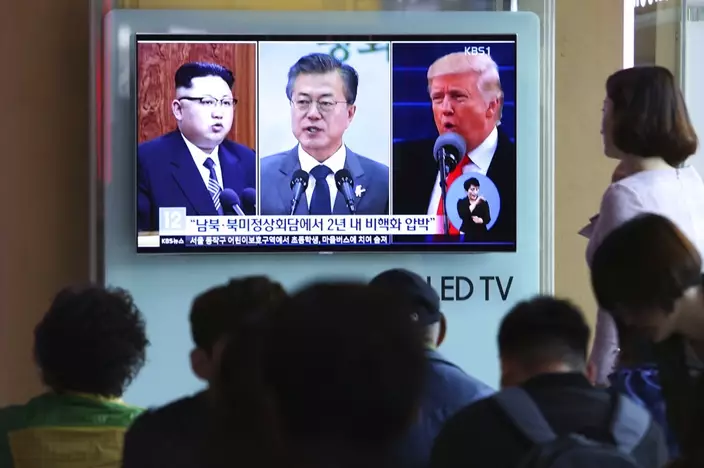
People watch a TV screen showing file footage of U.S. President Donald Trump, right, South Korean President Moon Jae-in and North Korean leader Kim Jong Un, left, during a news program at the Seoul Railway Station in Seoul, South Korea, Wednesday, April 18, 2018. (AP Photo/Ahn Young-joon)
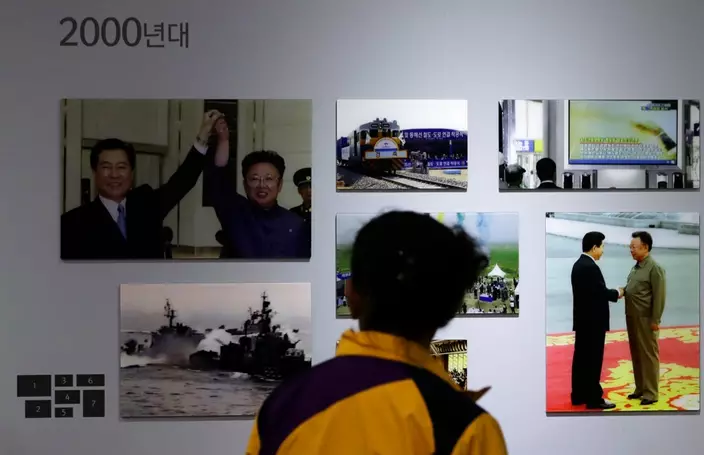
A visitor looks at the photos of two Koreas history at exhibition hall of the unification observatory in Paju, South Korea, Wednesday, April 18, 2018.(AP Photo/Lee Jin-man)
Many analysts believe that Kim sees the meeting with Trump as a way to bestow legitimacy on his own leadership and on a rogue nuclear program that he has built in the face of international criticism and crippling sanctions. Many say it is unlikely that the North will trade away its hard-won nuclear weapons without getting what it wants in return.
"North Korea is expressing a commitment to a complete denuclearization," Moon said during a meeting with the heads of media organizations in South Korea on Thursday. "They are not presenting a condition that the U.S. cannot accept, such as the withdrawal of the American troops in South Korea. ... North Korea is only talking about the end of a hostile policy against it and then a security guarantee for the country."
Trump revealed Tuesday that the U.S. and North Korea had been holding direct talks at "extremely high levels" in preparation for their summit. Trump also said that North and South Korea are negotiating an end to hostilities before next week's summit.
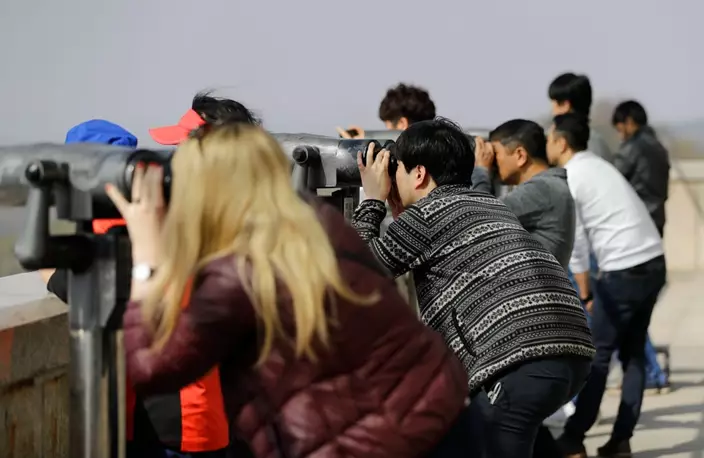
Visitors use binoculars to see the North Korea side from the unification observatory in Paju, South Korea, Wednesday, April 18, 2018. (AP Photo/Lee Jin-man)
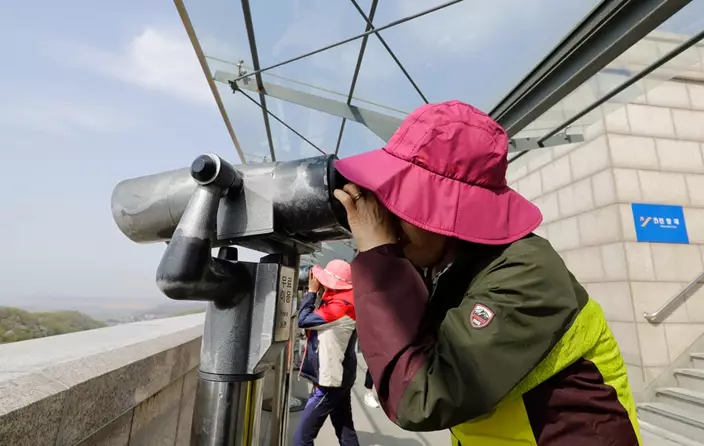
Visitors use binoculars to see the North Korea side from the unification observatory in Paju, South Korea, Wednesday, April 18, 2018. U.S. President Donald Trump has given his "blessing" for North and South Korea to discuss the end of the Korean War amid a diplomatic push to end the North Korean nuclear standoff. One problem: There can be no real talks without the involvement of the other countries that fought the 1950-53 war, and especially the United States. (AP Photo/Lee Jin-man)
North Korea has long sought a peace treaty with the United States to formally end the 1950-53 Korean War. Some South Koreans fear the North could use such a treaty as a pretext for demanding the withdrawal of the American troops in the South. Some worry that potential discussions on formally ending the war may distract from already difficult efforts to rid the North of nuclear weapons and apply robust verification of that process.
The armistice that halted fighting in the war was signed by the U.S.-led United Nations Command, North Korea and China. South Korea was a member of the U.N. Command but was not a direct signatory.
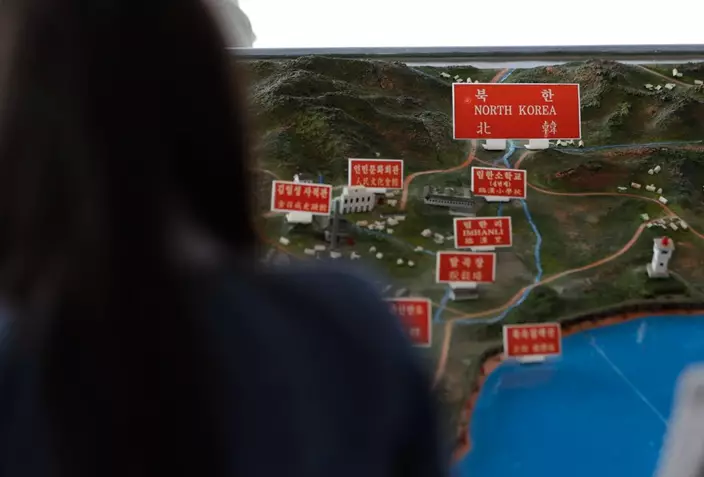
A visitor looks at a map of North Korean towns at the unification observatory in Paju, South Korea, Wednesday, April 18, 2018.(AP Photo/Lee Jin-man)
In their previous summit in 2007, the Koreas declared a commitment toward ending the war and vowed to pursue discussions with others. But the efforts faltered and relations between the rivals worsened after a conservative government took office in Seoul in February 2008.
SEOUL, South Korea (AP) — North Korean leader Kim Jong Un supervised salvo launches of the country’s “super-large” multiple rocket launchers that simulated a nuclear counterattack against enemy targets, state media said Tuesday, adding to tests and threats that have raised tensions in the region.
The report by North Korea’s official Korean Central News Agency came a day after the South Korean and Japanese militaries detected the North firing what they suspected were multiple short-range ballistic missiles from a region near its capital, Pyongyang, toward its eastern seas.
Analysts say North Korea’s large-sized artillery rockets blur the boundary between artillery systems and ballistic missiles because they can create their own thrust and are guided during delivery. The North has described some of these systems, including the 600mm multiple rocket launchers that were tested Monday, as capable of delivering tactical nuclear warheads.
KCNA said Monday’s launches represented the first demonstration of the country’s nuclear-weapons management and control system called “Haekbangashoe,” or “nuclear trigger.” The report described the drill as aimed at demonstrating the strength and diverse attack means of North Korea’s nuclear forces amid deepening tensions with the United States and South Korea, which it portrayed as “warmongers” raising tensions in the region with their combined military exercises.
State media photos showed at least four rockets being fired from launch vehicles as Kim watched from an observation post. It said the rockets flew 352 kilometers (218 miles) before accurately hitting an island target and that the drill verified the reliability of the “system of command, management, control and operation of the whole nuclear force.”
KCNA said Kim expressed satisfaction, saying that the multiple rocket launchers were as accurate as a “sniper’s rifle.”
He said the drill was crucial for “preparing our nuclear force to be able to rapidly and correctly carry out their important mission of deterring a war and taking the initiative in a war in any time and any sudden situation.” The comments reflected North Korea’s escalatory nuclear doctrine, which authorizes the military to launch preemptive nuclear strikes against enemies if it perceives the leadership as under threat.
South Korea’s Joint Chiefs of Staff said the weapons from Monday’s launches flew about 300 kilometers (185 miles) before crashing in the waters between the Korean Peninsula and Japan. The ranges suggested the weapons would likely target sites in South Korea. The latest launches came as South and the United States have been conducting a two-week combined aerial exercise that continues through Friday aimed at sharpening their response capabilities against North Korean threats.
When asked about the North Korean claims, Lee Sung Joon, spokesperson of South Korea’s Joint Chiefs of Staff, said it remains unclear whether the North perfected the designs for small, battlefield nuclear weapons that could fit on its rockets. He insisted the North was likely exaggerating the accuracy of its multiple rocket launcher systems and that South Korea would be able to detect and intercept such weapons, without elaborating on specific missile defense capabilities.
Lee said it was possible that the North used the drill to test the multiple rocket launchers it potentially plans to export to Russia as the countries expand their military cooperation in the face of separate, intensifying confrontations with the United States. The U.S. and South Korea have accused North Korea of transferring artillery shells, missiles and other munitions to Russia to help extend its warfighting in Ukraine.
North Korea in recent months has maintained an accelerated pace in weapons testing as it continues to expand its military capabilities while diplomacy with the United States and South Korea remained stalled. Outside officials and analysts say Kim’s goal is to eventually pressure the United States into accepting the idea of the North as a nuclear power and negotiating economic and security concessions from a position of strength.
In response to North Korea’s evolving nuclear threats, the United States and South Korea have been strengthening their bilateral military drills and trilateral exercises with Japan. The countries are also sharpening their nuclear deterrence strategies built around strategic U.S. assets.
In past years, North Korea has test-fired nuclear-capable missiles designed to strike sites in South Korea, Japan and the mainland U.S. Many experts say North Korea already possesses nuclear missiles that can reach all of South Korea and Japan, but it has yet to develop functioning intercontinental ballistic missiles that can travel to the continental U.S.
The latest launches came days after North Korea announced Saturday it tested a “super-large” cruise missile warhead and a new anti-aircraft missile in a western coastal area earlier last week. In early April, North Korea also test-launched what it called a solid-fuel intermediate-range missile with hypersonic warhead capabilities, a weapon that experts say is meant to attack remote targets in the U.S. Pacific territory of Guam and beyond. __ AP writer Hyung-jin Kim contributed to the report.
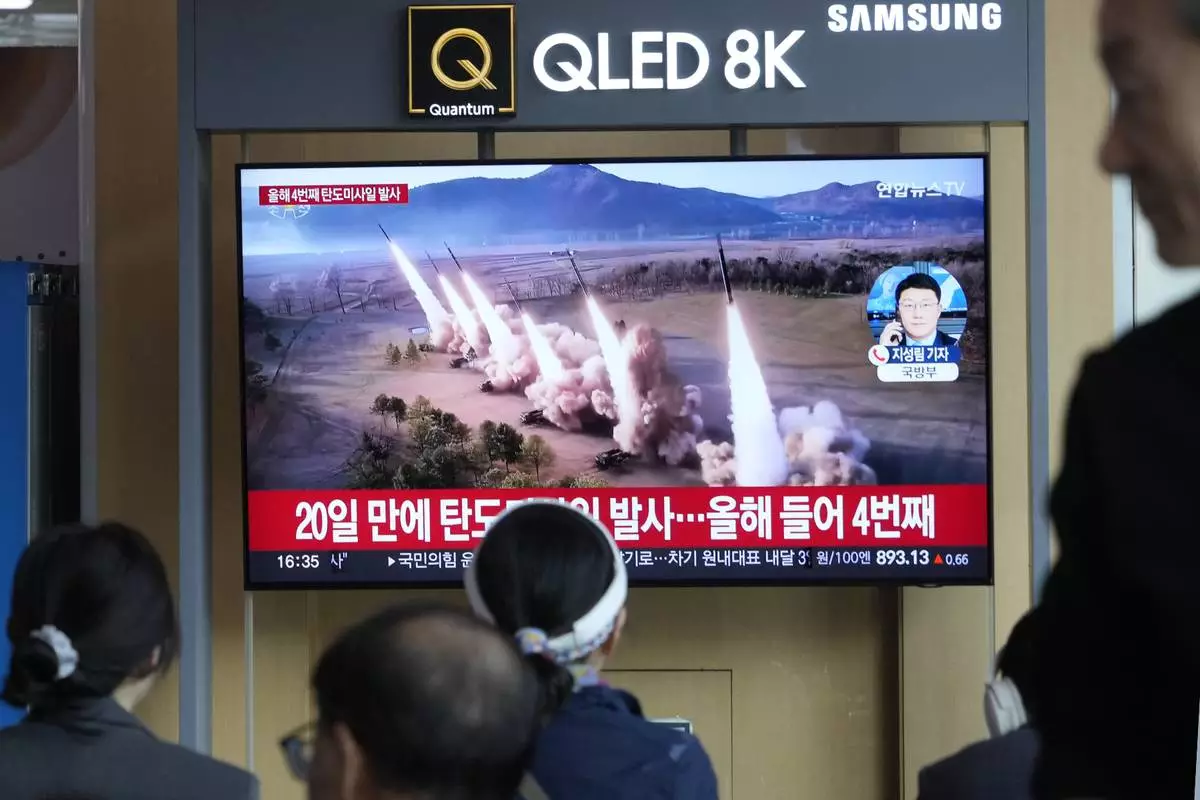
A TV screen shows a file image of North Korea's missiles launch during a news program at the Seoul Railway Station in Seoul, South Korea, Monday, April 22, 2024. North Korea fired multiple suspected short-range ballistic missiles toward its eastern waters on Monday, South Korea's military said, the latest in a recent series of weapons launches by the North. (AP Photo/Ahn Young-joon)
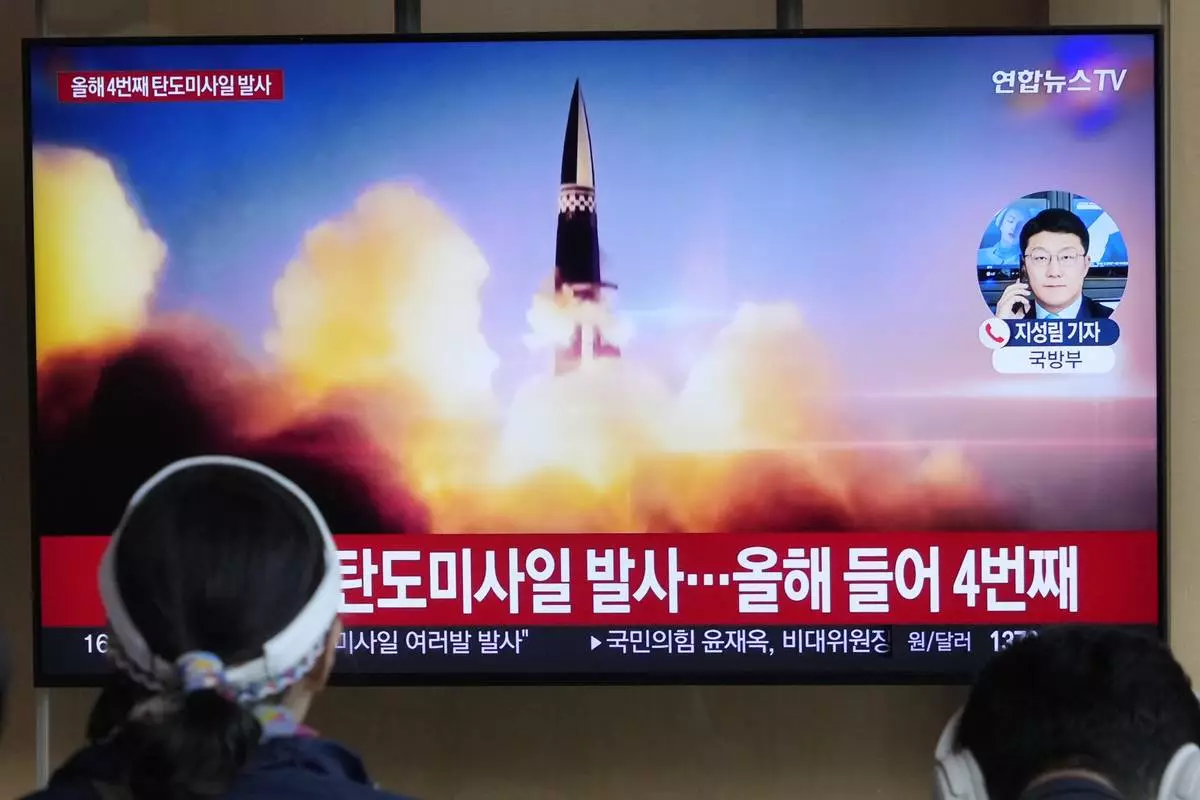
A TV screen shows a file image of North Korea's missile launch during a news program at the Seoul Railway Station in Seoul, South Korea, Monday, April 22, 2024. North Korea fired multiple suspected short-range ballistic missiles toward its eastern waters on Monday, South Korea's military said, the latest in a recent series of weapons launches by the North. (AP Photo/Ahn Young-joon)
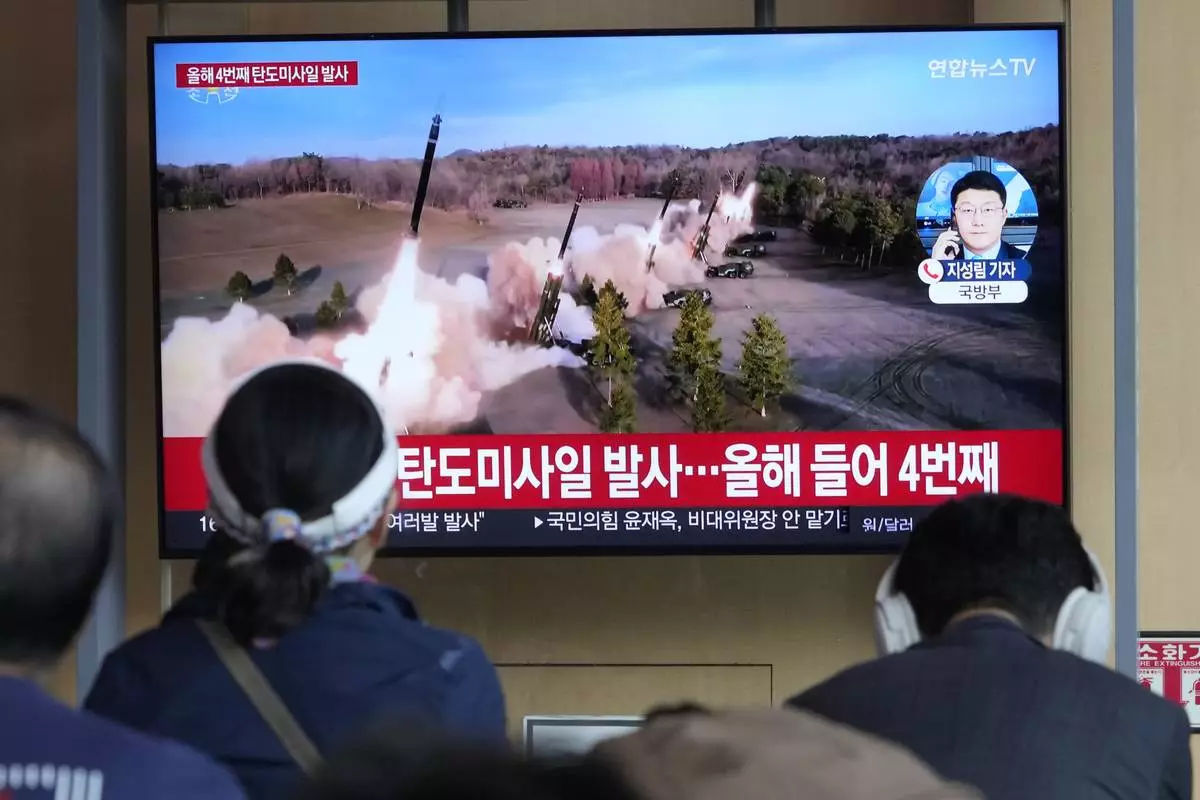
A TV screen shows a file image of North Korea's missiles launch during a news program at the Seoul Railway Station in Seoul, South Korea, Monday, April 22, 2024. North Korea fired multiple suspected short-range ballistic missiles toward its eastern waters on Monday, South Korea's military said, the latest in a recent series of weapons launches by the North. (AP Photo/Ahn Young-joon)
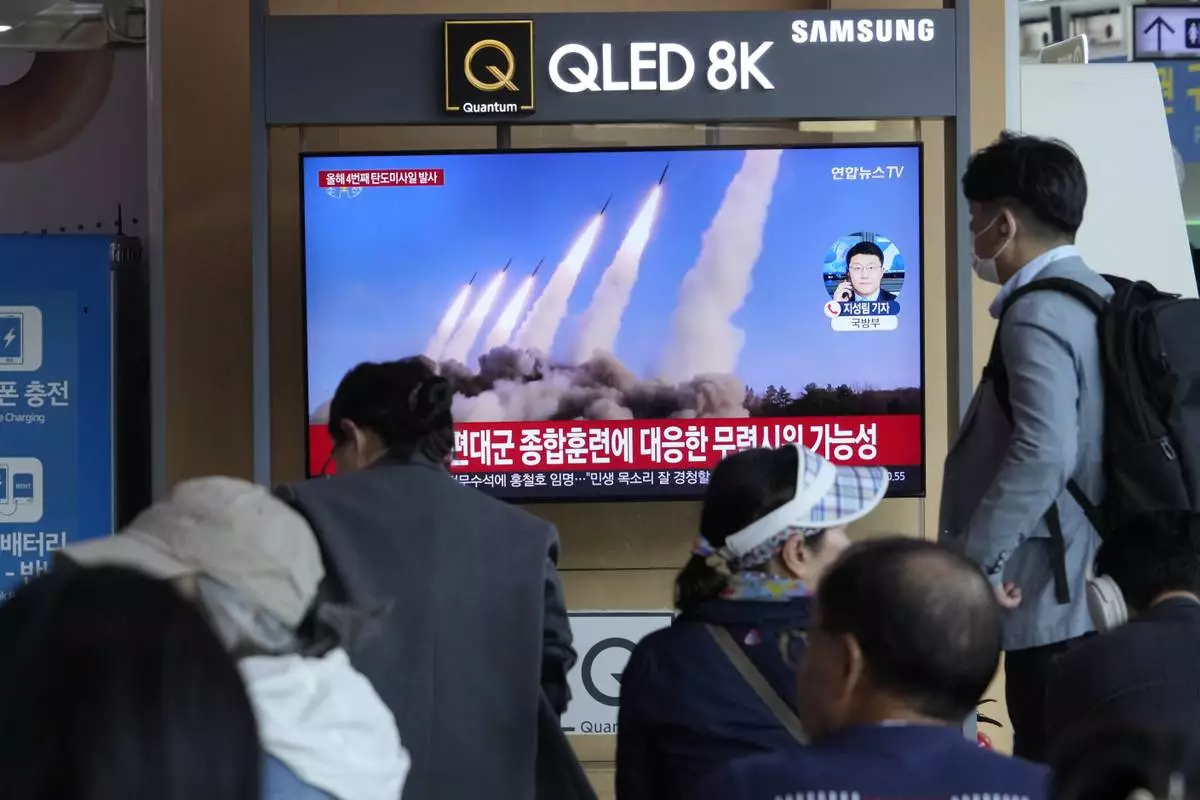
A TV screen shows a file image of North Korea's missiles launch during a news program at the Seoul Railway Station in Seoul, South Korea, Monday, April 22, 2024. North Korea fired multiple suspected short-range ballistic missiles toward its eastern waters on Monday, South Korea's military said, the latest in a recent series of weapons launches by the North. (AP Photo/Ahn Young-joon)
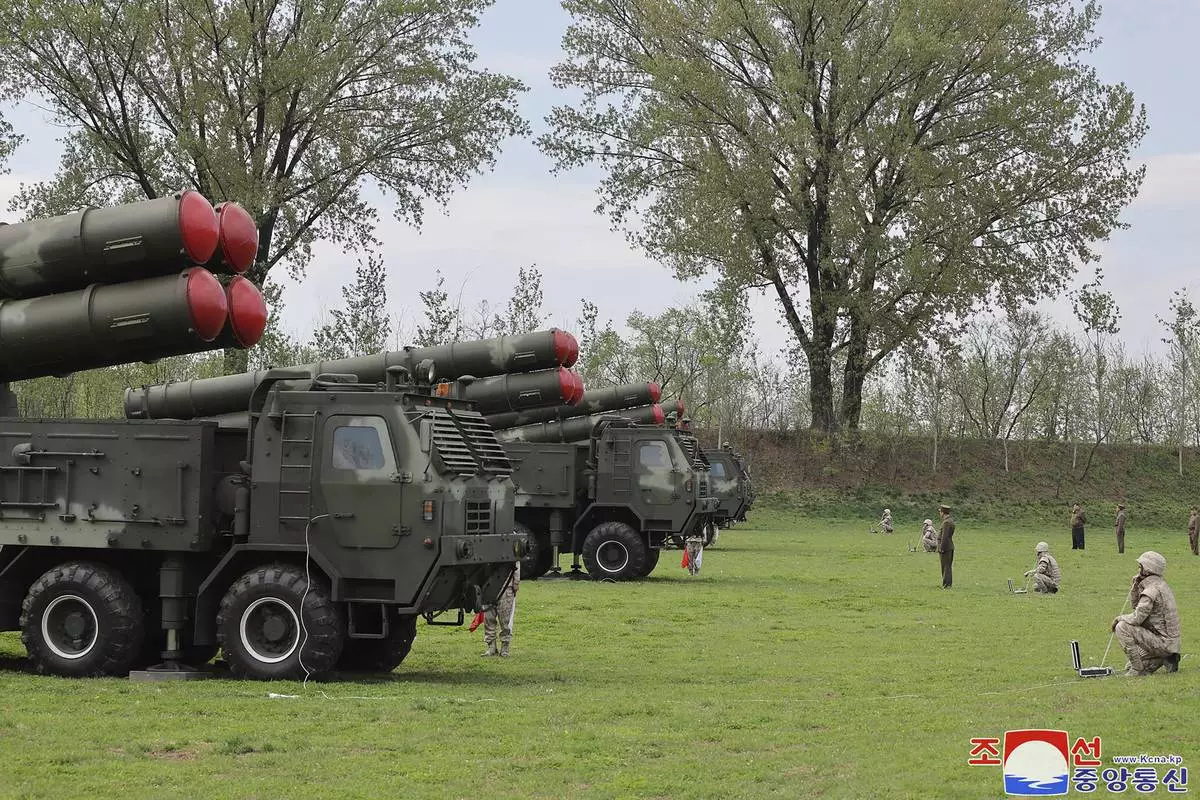
This photo provided by the North Korean government, shows what it says rocket drills that simulate a nuclear counterattack against enemies, at an undisclosed place in North Korea Monday, April 22, 2024. Independent journalists were not given access to cover the event depicted in this image distributed by the North Korean government. The content of this image is as provided and cannot be independently verified. Korean language watermark on image as provided by source reads: "KCNA" which is the abbreviation for Korean Central News Agency. (Korean Central News Agency/Korea News Service via AP)
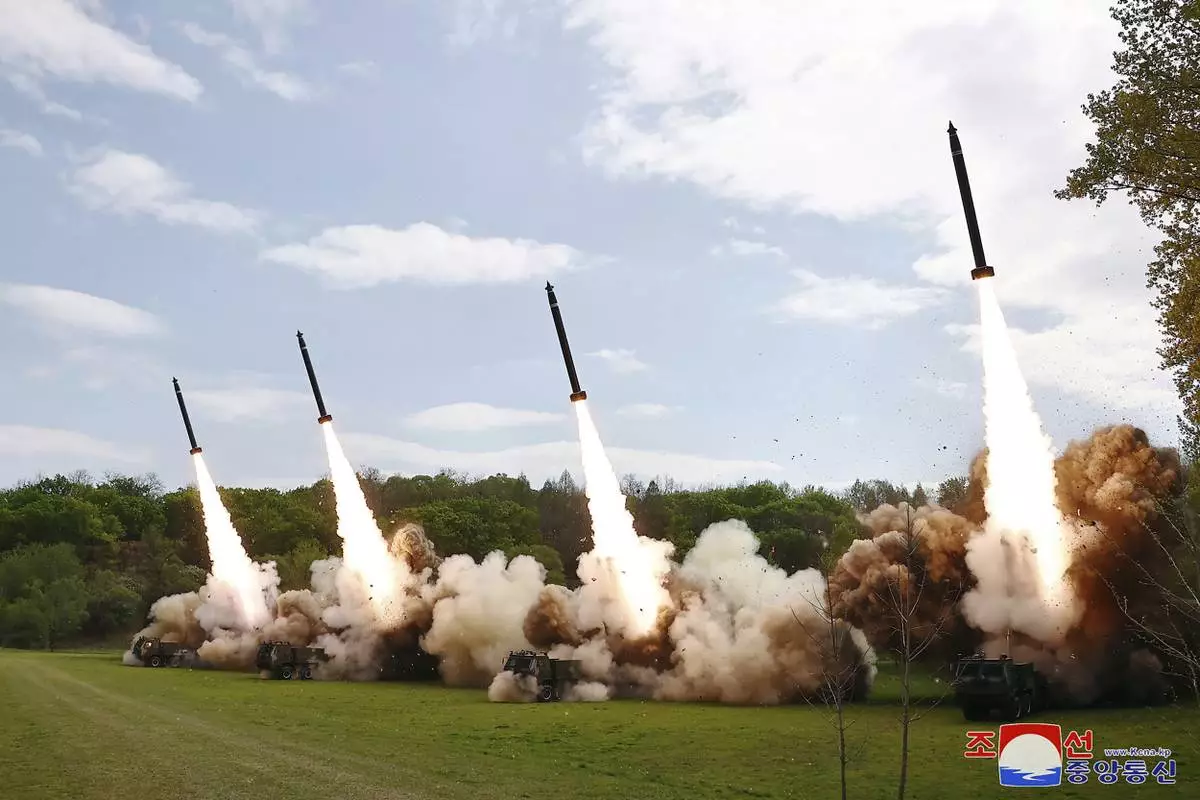
This photo provided by the North Korean government, shows what it says rocket drills that simulate a nuclear counterattack against enemies, at an undisclosed place in North Korea Monday, April 22, 2024. Independent journalists were not given access to cover the event depicted in this image distributed by the North Korean government. The content of this image is as provided and cannot be independently verified. Korean language watermark on image as provided by source reads: "KCNA" which is the abbreviation for Korean Central News Agency. (Korean Central News Agency/Korea News Service via AP)

In this photo provided by the North Korean government, North Korean leader Kim Jong Un, right, supervises a drill at an undisclosed place in North Korea Monday, April 22, 2024. Independent journalists were not given access to cover the event depicted in this image distributed by the North Korean government. The content of this image is as provided and cannot be independently verified. Korean language watermark on image as provided by source reads: "KCNA" which is the abbreviation for Korean Central News Agency. (Korean Central News Agency/Korea News Service via AP)


















